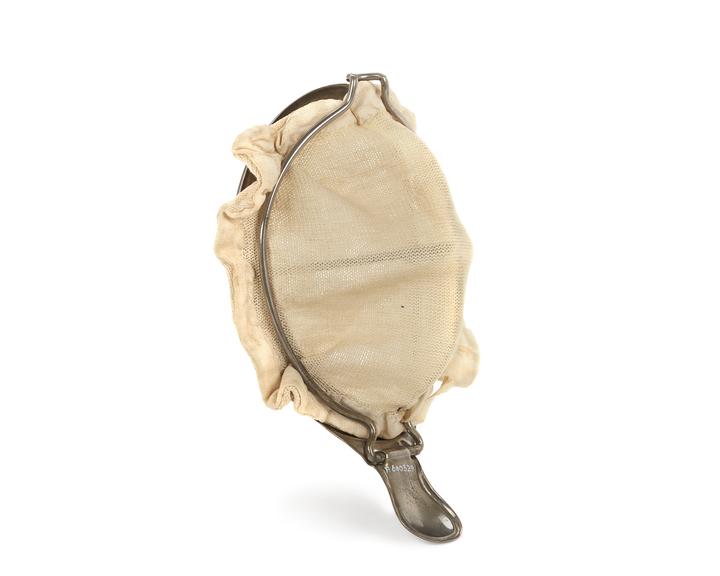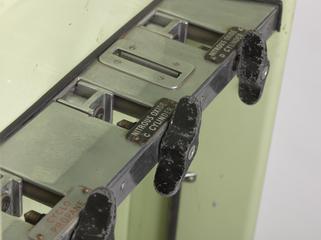






Schimmelbusch mask for open chloroform anaesthesia, possibly England, 1890-1935
This type of mask is named after its developer Curt Schimmelbusch (1860-1895), a German doctor and pathologist. Developed in 1890, it was originally design for use with ether, an anaesthetic agent. The
Chloroform was dropped from a dropping bottle, which has a graduated scale, onto the cotton material of the mask. It would then evaporate and the patient would breathe in the gas. The trough around the edge of the mask captured any liquid, stopping it from dropping on to the patient's face and causing skin irritation.
Details
- Category:
- Anaesthesiology
- Collection:
- Sir Henry Wellcome's Museum Collection
- Object Number:
- A600329
- Materials:
- frame, metal and cover, fabric, knitted
- type:
- anaesthetic mask
- credit:
- Loan, Wellcome Trust




